
Sound for Elvis
A Baz feature is always a trial by fire for the (largely) Australian audio team. But it was worth it.
When Wayne Pashley first chatted to Baz Luhrmann about Elvis, it’s like his whole body went into shock. Wayne is the re-recording mixer and sound supervisor on the movie and long-time Baz collaborator. Every audio component of the movie ends up on channel of Wayne’s mixing console. Every song, swoon, siren, slapback… it all funnels through Wayne at Big Bang Sound studios:
“I asked Baz what aspect of Elvis’s life he was focussing on. ‘All of it,’ was his answer, and I my head nearly spun off my shoulders.”
Elvis was a monumental audio undertaking for all concerned. Composer Elliot Wheeler and supervising music editor Jamieson Shaw were working on the song selection and music some five years before the movie’s release! The music and the performances were paramount to the success of the production. Like conservators carefully lifting the Mona Lisa off the wall of the Louvre for a check-up, the music and audio team were all acutely aware of the precious material in their custody. Wayne Pashley nutshells it best:
“Right at the beginning, when I asked Baz what my No.1 priority should be, he answered: ‘I want you to protect Elvis Presley’.”
BEYOND IMPERSONATION
Elvis is the most impersonated person on the planet. (Just ask the good people of Parkes in rural NSW!) With this in mind, the casting of the key role was beyond crucial, it was utterly fundamental to the success of the movie. The actor would need to inhabit the very being of Elvis. Impersonation wasn’t enough. The performance would need to be natural enough such that Elvis die-hard fans could safely suspend disbelief for two and half hours.
Austin Butler won the role and everyone in the audio team praised his efforts. All the performances prior to the ’68 TV Special’ were entirely re-recorded in Nashville, featuring Austin’s vocals, while the TV Special and the Vegas performances used original Elvis vocals taken from archival multitrack tape from RCA, blended with Austin’s performance when required. It meant that Austin needed to perfectly emulate those live performances, many of which are known by fans down to the last breath.
Composer, Elliot Wheeler and supervising music editor Jamieson Shaw, sum up the situation well:
Elliot Wheeler: “Austin was just so phenomenally close to Elvis in a lot of those performances.
Jamieson Shaw: “Early on in the process we did some tests with Austin singing into an Electrovoice RE15 — the mic that Elvis used throughout his Vegas residencies. We had the recording of Elvis from 1972. We put them together as best we could and processed them, and then did a blind test — we had some friends come by the office, and A/B’ed them to see who could pick which was Elvis. Often, people couldn’t pick them apart. Austin had done such a good job and Elliot worked so tirelessly with Austin on his vocal nuances.”
Elliot Wheeler: “It allowed us to be so seamless with the blend between the two of the performances, which gave us a lot of flexibility in the mix.”
Jamieson Shaw: “It made such a big difference to how those ’70s vocals came together knowing that Elvis always had an RE15 in his hand. I’m glad he didn’t stick with, say, the Altec 195A he used for the ’68 Special’, which is a handheld condenser. That mic was picking up more of the audience than vocal.”
Wayne Pashley: “We also took the RE15 into any additional material we had to do for Austin in post-production. For example, if we’re recording Austin breathing side of stage or re-instituting a line that wasn’t Elvis-y enough, we’d use the RE15.”



AUTHENTIC
Recreating the Russwood Park concert of 1956 was a good example of how Baz was determined to ‘take us there’ — not as a fly on the wall but as an audience member or even as a band member. It’s visceral, and the sense of pandemonium is palpable.
Jamieson Shaw: “A lot of the detail needs to be absolutely authentic to achieve that sense of being in the crowd. It was a really big challenge.”
Elliot Wheeler: “Up until the ’68 Special a lot of the Elvis recordings were either mono or three-track and didn’t really have the fidelity needed. Baz was really clear that he wanted contemporary audiences to have a sense of the excitement of what it was like to be at an original Elvis performance.
“We went to Nashville early on in the process and worked with a wonderful music producer over there, Dave Cobb, who runs the RCA Studio where Elvis recorded so many of his tracks. Dave went to town with the gear he had — from vintage ribbon mics through to Ampex preamps, all recorded to tape. He even went to the extent of securing the original tape delay used in Sun Studios that was lovingly refurbished.”
For music mixer and editor, Evan McHugh, a chunk of his job was to ensure the sonic signatures of the ’50s, ’60s, and ’70s hung together as a cohesive whole.
Evan McHugh: “We had the recordings the guys had finished in Nashville a few months earlier — with dozens of tracks — through to 50-year-old recordings where the drums are in mono with no split between kicks and snares. The balance was in maintaining the nostalgia and authenticity of those original tracks but recognising that this was a Baz movie and everything had to sound massive. Early on, I recall slipping too far in one direction or the other — too ‘vintage’ or too contemporary sounding. Once we started to crack the code, it was easier to balance the overall music mix decade to decade.
“One thing we learnt was not to go too hard cleaning up the old multitracks. They were full of bleed and had tape hiss throughout. If we cleaned them up too much it didn’t feel Elvis-y enough. In fact, it’s the tape hiss, the distortions, the fact the bass guitar is bleeding into every bloody mic… all of that that help make the mix feel right. Otherwise it felt too pristine and didn’t have the vibe.”
it’s the tape hiss, the distortions, the fact the bass guitar is bleeding into every bloody mic… all of that that help make the mix feel right

CROWDS
The story of Elvis is his love affair with his fans. His fans inspired him, drove him and ultimately led to his demise. In fact, it’s not an exaggeration to suggest that the audiences in the movie have a starring role. And they needed their own voice.
Wayne Pashley: “The first scene [Supervisor dialogue editor] Derryn Pasquill and I did was set in Vegas, where Elvis kisses all the women in the auditorium before launching into Can’t Help Falling in Love. We soon realised that whatever available material we had in our sound libraries wasn’t going to cut it — a female scream of lust at an Elvis Presley concert sounds very different to the scream that you will get out of a library, which is generally a horror scream.”
The job of recording screaming women and crowds was a serious business. An outfit called the Loop Group was engaged to provide the screaming talent. An ambisonic recording of the crowds, up to 500-strong, were captured on set by production sound mixer, David Lee. Then Derryn Pasquill and Wayne Pashley would examine old film and recordings to match the ebb, flow and intensity of the original audiences.
Wayne Pashley: “We tried to match the peaks of intensity: they shriek here, they gasp there, they join in singing here…”
Actors from the Loop Group did their homework to ensure the idiosyncrasies of the crowds changed through the decades.
BEST MEDICINE
Elvis proved to be just the antidote audiences needed to help shake off the post covid blues. Proving to be attractive to audiences of all ages, it was a reminder of just how important music is to our wellbeing.
In particular, the film’s composer, Elliot Wheeler, was struck by that visceral connection:
“The Nashville sessions with Dave Cobb were especially impacting. There wasn’t a reliance on technology, it was all about the joy of bringing great musicians into a room together and capturing that energy with as few obstacles in the way as possible. It was almost like a wake-up call — this is why we do what we do. Like many others in this industry, I spend countless hours in a dark room looking at a computer, and the Dave Cobb sessions were so refreshingly different. And I think that you can really feel that fresh energy in the performances. It’s something we were trying to capture across the entire film and sometimes you need to strip away the technology to tap into that.”

It made such a big difference to how those ’70s vocals came together knowing that Elvis always had an RE15 in his hand





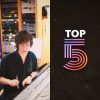


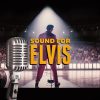

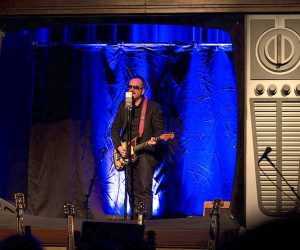
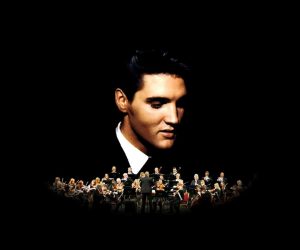


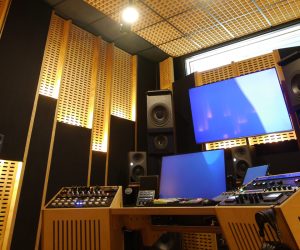


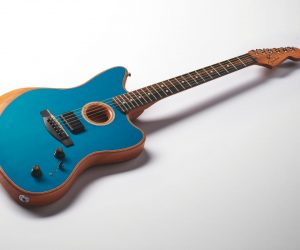

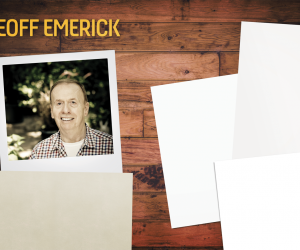
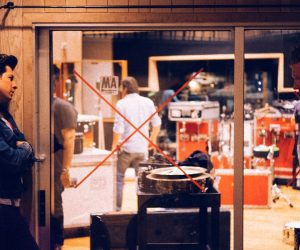
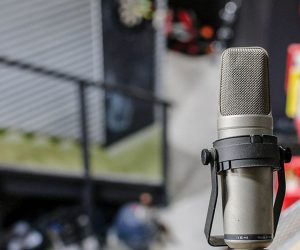


RESPONSES